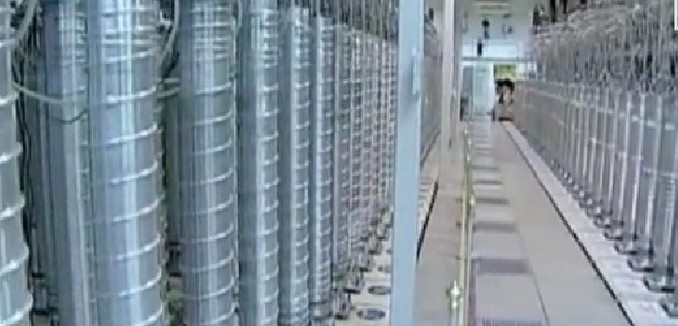Iranian state media reports that the regime has stopped dismantling inactive centrifuges at two uranium enrichment plants, Reuters wrote on Tuesday.
“The (dismantling) process stopped with a warning,” Ali Shamkhani, Secretary of the National Security Council, was quoted as saying by the ISNA student news agency.
Only decommissioned centrifuges were being dismantled to begin with, of which there were about 10,000 at Natanz and Fordow, the Atomic Energy Organisation of Iran has said.
Shamkhani did not specify what he meant by “warning”, but the head of parliament’s nuclear deal commission, Alireza Zakani, told Mehr news agency that the dismantling had stopped in Fordow because of the lawmakers’ letter to Rouhani.
Reuters reported that 20 Iranian parliamentarians sent a letter to President Hassan Rouhani last week demanding that the process of dismantling centrifuges be slowed down. Their demand was apparently made in accordance with the dictates of Iranian Supreme Leader Ayatollah Ali Khamenei, who has indicated that “the deal should only be implemented once allegations of past military dimensions (PMD) of Iran’s nuclear program had been settled.”
Last month, Khamenei attached conditions to the implementation of the nuclear agreement, including that sanctions be removed even before Iran had complied with its obligations and scaled down its nuclear program.
This is contrary to the plain reading of the nuclear deal (.pdf), which states that the International Atomic Energy Agency (IAEA) must verify Iran’s compliance with the deal’s requirements while the European Union simultaneously terminates, and the U.S. suspends, nuclear-related sanctions on the Islamic Republic.
On Monday, Iran’s Fars news agency reported that Shamkhani told Belgian Foreign Minister Didier Reynders, “Any unconstructive behavior or continuing the trend of threat and hostility will prevent expansion of mutual cooperation and it will result in a revision of our policies.”
Fars also reported that Reza Najafi, Iran’s ambassador to the IAEA, said that Tehran had complied with all obligations in regard to its past nuclear work, and that “the IAEA can now close the case concerning the Islamic Republic’s past and present nuclear activities forever.”
The nuclear deal bound Iran to reduce its stockpile of enriched uranium, redesign its heavy water reactor at Arak to produce less plutonium, and reduce the number of its installed centrifuges from an estimated 19,000 to 6,000. Iran has about 10,000 centrifuges currently enriching uranium. According to the nuclear deal, 5,000 centrifuges located at the Natanz enrichment facility will continue to enrich uranium, while 1,000 centrifuges in the reinforced, underground facility at Fordow will be producing isotopes for scientific research.
Senior administration officials have emphasized that Iran must comply with its obligations in order to receive sanctions relief. When the deal was announced in July, Secretary of State John Kerry said that Iran would need to reduce its stockpile of enriched uranium and remove the core of its heavy water reactor before sanctions would be lifted.
And the relief from sanctions will only start when Tehran has met its key initial nuclear commitments – for example, when it has removed the core from the Arak reactor; when it has dismantled the centrifuges that it has agreed to dismantle; when it has shipped out the enriched uranium that it has agreed to ship out. When these and other commitments are met, the sanctions relief will then begin to be implemented in phases.
An unnamed senior administration official reiterated these conditions in a September briefing.
So starting on adoption day, about October 18th, we expect that Iran is going to need to make major changes to its Natanz enrichment facility. That will involve taking out thousands of centrifuges and putting them into IAEA-monitored storage. It will also involve taking out a very large amount of infrastructure, specifically some of the pipework and electrical infrastructure that allows for the enrichment process to work. All of this is going to take a lot of effort and probably a fair amount of time. But the key point in this action that the Iranians will undertake as well as the others is that the ball is really in Iran’s court. It’s difficult for us to fully predict how long it’s going to be until sanctions relief is implemented because we can’t offer that relief to the Iranians until they take all of these steps at Natanz, at Fordow, at the Arak reactor. And so we really structured the deal in such a way that they are required to do all those things before sanctions relief. So at Natanz, they need to do those things.
[Photo: euronews / YouTube ]




